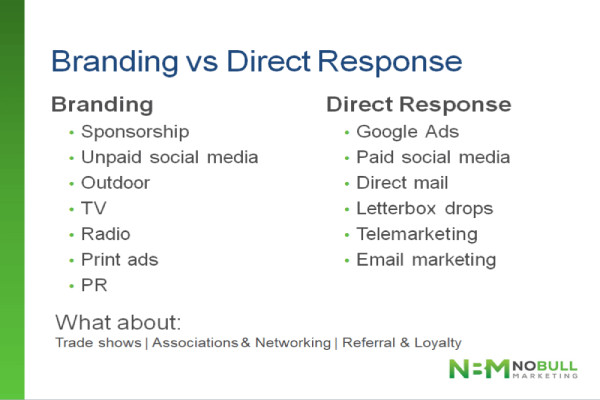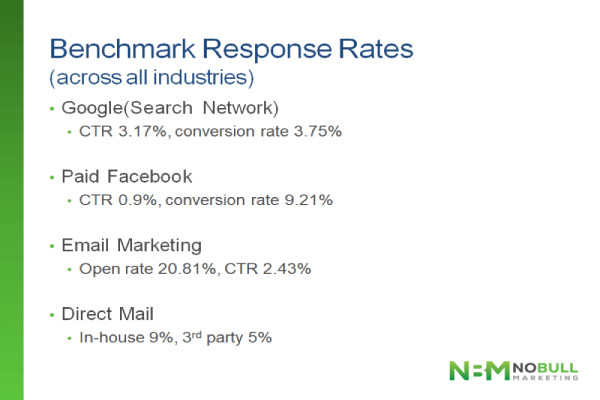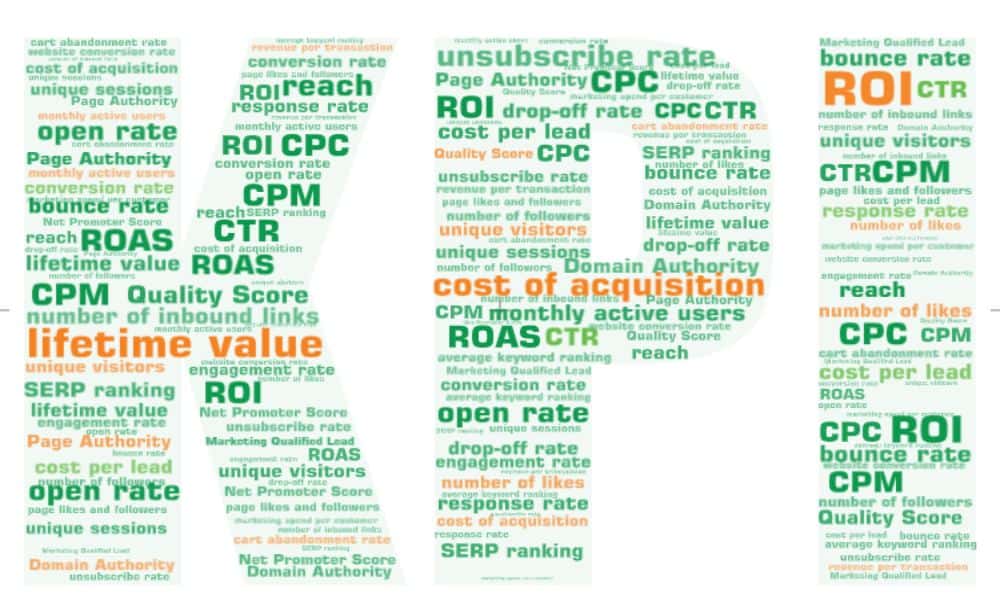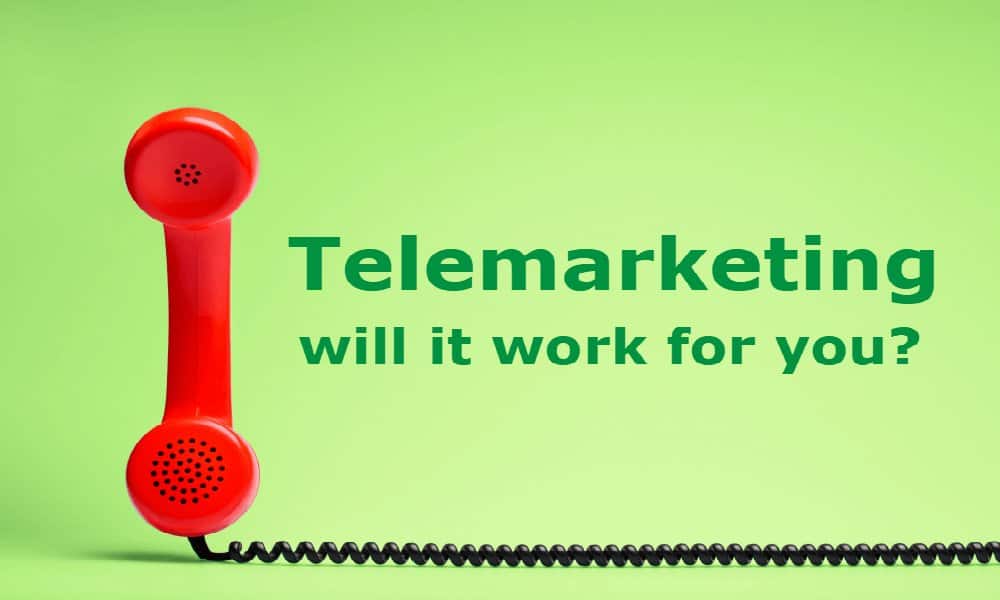Today we’re looking at the difference between branding and direct response marketing. Both are important, but how do they fit in your overall marketing plan?
The difference between branding and direct response
A branding campaign is designed to drive or reinforce awareness of you and your business.
Awareness is a perfectly valid goal. The more people are aware of your business, the better. (As long as they’re positive, that is!) More people will look up your site, visit your premises, enquire or buy from you. Branding drives awareness, encourages potential clients to think of you and sets people up to buy in the future. But it can be a long time until someone actually pays you money.
Direct response is about getting a response right now. The aim is for people to enquire or purchase straight away. (That’s why they often have limited time offers. Think of End of Financial Year sales.) So you get a return on your investment much sooner.
How much should I spend on branding vs direct response marketing?
So where should you spend your money?
For established businesses, there’s a rule of thumb that says you spend 60% on branding, and 40% on direct response.
That works if you have a large budget and some cashflow. It’s also OK if you already have prospects in the pipeline, or existing customers to fund you while you wait for the branding to build. But for smaller and newer businesses, spending 60% of your budget on branding may not work.
With tighter cash flow and a more urgent need for revenue, smaller businesses often spend half their budget on direct response marketing.
The exact balance is up to you. But when you invest in marketing, be clear about your goal. Is it awareness? Leads? Clients? The goal affects all aspects of your campaign, especially creative and copy.
Branding vs Direct Response Channels
The slide below is from a recent workshop where I looked specifically at channels to reach your market.
Branding Channels
Let’s look at the branding channels first.
Sponsorship
 Many if not most sponsorships are about promoting your logo. It goes on marketing materials. Banners at an event. Powerpoint slides. Giveaway items. Those are all good for awareness, but they don’t help much with getting enquiries or sales.
Many if not most sponsorships are about promoting your logo. It goes on marketing materials. Banners at an event. Powerpoint slides. Giveaway items. Those are all good for awareness, but they don’t help much with getting enquiries or sales.
If you do opt to use sponsorship, try to give a special offer or promote something specific.
Unpaid social media
Once upon a time, you could get a response on social media without paying money. Nowadays that’s much more difficult. If you look at Facebook, only something like 6.4% of page followers will actually see something you post.
The graph below suggests it might be even worse in APAC.
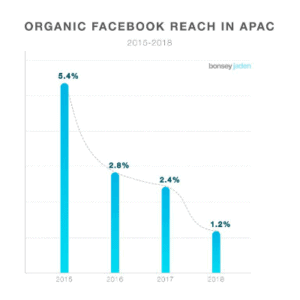
If you want more people to see your content on Facebook, you can, of course, promote posts, but now you’ve moved into paid social media. A totally different beast.
Outdoor advertising
This one’s fairly obvious. Normally you’re driving past a billboard, or waiting at a bus stop or train station. You see an ad for a very short time. Plus, your hands may not be free, so the chance that you’ll pick up your phone and call, or fill in a form, is really quite low.
TV and Radio
TV and radio suffer from the same issues. same thing with TV. You’re not going to reach many people who react immediately to the ad. Plus, TV in particular is very expensive, so you need to get a lot of returns.
There are some direct response TV ads, so it’s not a hard and fast rule. Think of shopping channels. The kind of ad where a phone number or web address is shown at huge size across the screen. In general though, these ads are on minor channels and/or late at night. Most TV advertising drives brand.
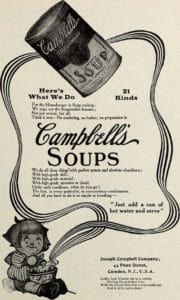 Print is interesting. I find many small business people think print ads are an effective way to promote their businesses.
Print is interesting. I find many small business people think print ads are an effective way to promote their businesses.
One positive about print is that it stays around longer than TV, radio or outdoor. Once it’s reached your home or office, it lasts till someone makes a conscious decision to throw it out. But we are really well trained to ignore on-page print advertising.
I’ve found an insert in a magazine or newspaper will usually get a response rate up to four times higher than an ad on a page of the same publication. Why is that? Possibly because when you pick the magazine or paper up, the insert drops out. It’s separate, so you notice it. You look at it. It grabs attention in a way the on-page ad doesn’t.
PR and publicity
It’s very difficult to get a strong call-to-action into a piece of publicity.
You promote some information to journalists. You hope they’ll like your pitch and do a story on it. But even if they do, you can’t control what they say. Without control of the message, it’s hard to get a clear call-to-action. And without a call-to-action, it’s hard to get a response.
What about direct response channels?
So what channels should you use if you want a direct, measurable response?
Google Ads
Google Ads is what used to be called Google Adwords. It’s a great direct response channel. Someone searching is someone with an interest, and often they’re looking to buy. What a great place for your ad to show up.
Just be careful with Google Ads. You need to get the targeting right. Check out this case study to see some of the common mistakes.
Paid social media
When you pay to promote posts on social media, you have lots of targeting options. You can target people you don’t know at all, but who are like the people you do know. That could be people like your social media followers or like your website visitors, or like your customers, or like your newsletter subscribers. You decide.
There are huge opportunities on social media, although once again you need to think it through. Which platform? How will you target your audience? Which promotion option will you use? That’s even before you consider the content of your message or offer.
Direct mail
Direct mail is a separate communications piece that you send to selected customers or targets. Your message reaches somebody in their home, or in their office. It’s a physical thing. They have to pick it up, look at it. That’s especially true if it’s addressed to them and addressed correctly.
Direct mail is an overlooked channel that can work really well. It certainly costs more than email or social media, on a per person basis. But the response rates are so much higher that it may well be worth it.
Take a look at these benchmark rates.
You can check out updated and industry-specific response rates via the following links.
- Google(Search Network): https://www.wordstream.com/blog/ws/2016/02/29/google-adwords-industry-benchmarks
- Paid Facebook: https://www.wordstream.com/blog/ws/2017/02/28/facebook-advertising-benchmarks
- Email Marketing: https://mailchimp.com/resources/email-marketing-benchmarks/
- Direct Mail: https://www.iwco.com/blog/2019/01/16/direct-mail-response-rates-dominate-other-channels/
The benchmark response rate for in-house direct mail (to your own list of contacts) is 9%.
You can also buy or rent third party lists to send direct mail to. You can select names based on all kinds of criteria to match your target persona. In this case, the benchmark response rate is around 5%.
Letterbox drops
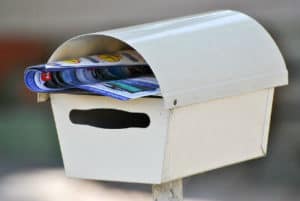 I see letterbox drops as different from direct mail. Why? They’re less targeted. A letterbox drop is for everybody in a suburb or everybody in a particular area. It’s not personally addressed, so it doesn’t have the same attraction.
I see letterbox drops as different from direct mail. Why? They’re less targeted. A letterbox drop is for everybody in a suburb or everybody in a particular area. It’s not personally addressed, so it doesn’t have the same attraction.
On the other hand, it’s generally more affordable and easier to implement. It really depends on what you’re selling. Letterbox drops are great for locally delivered services which lots of people need.
Telemarketing
We all hate it, but businesses go on doing it – because it works! Once again, the trick is in the targeting. There are both B2C and B2B telemarketing lists available.
You also need a really good script.
Email marketing
This is the one I always tell everybody they should be doing. It’s affordable and relatively simple to set up. Just make sure you comply with the Spam Act. (The rules are all good business sense anyway!)
Start with a newsletter to get going. Then try some more targeted emails. Autoresponders when people download specific resources from your site. An introductory email training course. A segmented offer. It’s easy to track results. Do more of whatever works.
If you’d like to talk about exactly which marketing channels would work best for your business, drop me a line!


